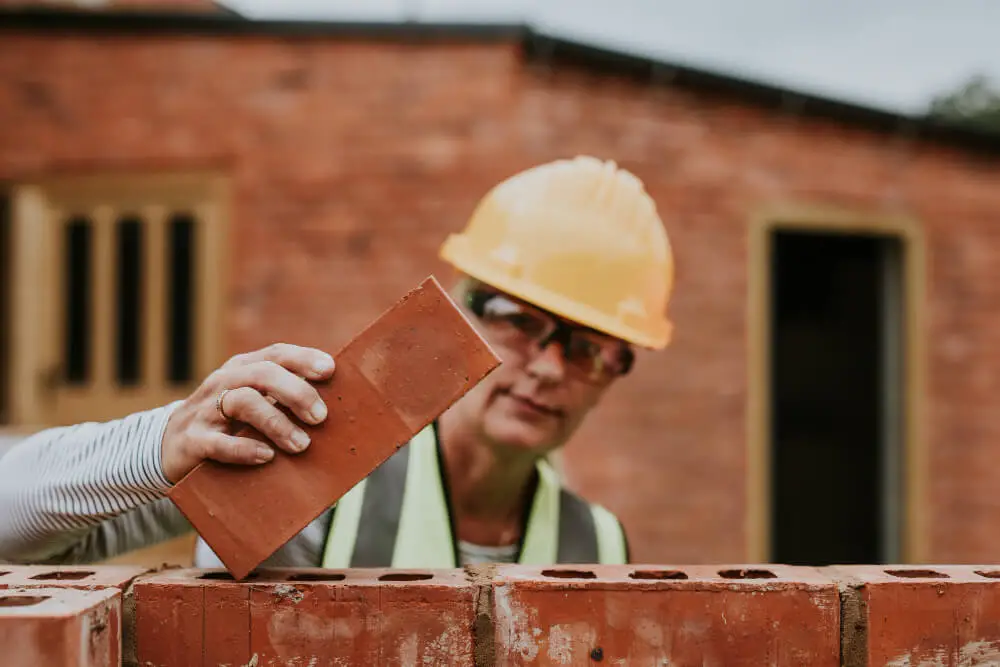Bricks have been used as a building material for thousands of years, and their durability and versatility make them a popular choice even in modern construction. If you’ve ever wondered how to make a brick from scratch, this step-by-step guide will walk you through the process. By the end, you’ll be satisfied with creating your bricks and the knowledge to undertake future brick-making projects.
How to Make a Brick from Scratch
Step 1: Preparing the soil for brick-making

Preparing the soil is the first step in making a brick from scratch. The soil quality will directly affect the strength and durability of the bricks. Start by selecting a location with clay-rich soil, as clay is the primary ingredient in brickmaking. Clear the area of any debris or vegetation, and then dig down to a depth of at least one foot.
Once you have excavated the soil, you must remove any rocks, roots, or large particles that could interfere with the brick-making process. Use a sieve to filter out these unwanted materials and ensure that only fine soil remains. This will create a smooth and consistent texture in your final bricks.
With your soil prepared, it’s time to move on to the next step.
Step 2: Mixing the soil with water and additives
To create bricks, the soil must be mixed with water and additives. The purpose of these additives is to improve the workability and strength of the soil. One common additive is sand, which helps reduce shrinkage and cracking during drying. Another additive is straw, which can increase the tensile strength of the bricks.
Begin by moistening the soil with water. You want the soil to be damp but not saturated. Gradually add water while mixing the soil until it reaches a workable consistency. It should hold its shape when compressed and not crumble apart.
Once the soil is at the desired consistency, add the additives. The amount of sand and straw will depend on your soil’s specific characteristics and the bricks’ desired strength. Mix the additives thoroughly into the soil to ensure an even distribution.
Step 3: Shaping the bricks using molds
Now that your soil mixture is ready, it’s time to shape the bricks using molds. Various types of molds are available, including wooden molds, metal molds, and even DIY molds made from plastic or other materials. Choose a mold that suits your needs and budget.
To begin the shaping process, fill the mold with the soil mixture. Use a trowel or your hands to press the soil firmly into the mold, ensuring it is evenly distributed. Once the mold is filled, smooth the top surface with a flat board or the back of a trowel.
After shaping each brick, carefully remove it from the mold and place it on a level surface to dry. Repeat this process until all of your soil mixture has been used.
Step 4: Drying the bricks

Drying is a critical step in the brick-making process. It removes excess moisture from the bricks, allowing them to harden and gain strength. Improper drying can result in weak and brittle bricks prone to cracking or crumbling.
To dry the bricks, you will need a suitable drying area. This can be a sunny outdoor or indoor space with good ventilation. Place the bricks in a single layer, ensuring they are not touching each other. This allows air to circulate each brick, promoting even drying.
It is important to regularly turn the bricks during the drying process to ensure uniform drying. The bricks may take several days or weeks to dry completely depending on the climate and weather conditions. Monitor the bricks regularly and adjust the drying time as needed.
Step 5: Curing the bricks for strength
Once the bricks are dry, they need to be cured to enhance their strength and durability further. Curing is the process of allowing the bricks to mature and harden over time. It involves keeping the bricks in a controlled environment with a specific moisture and temperature level.
To cure the bricks, stack them in a way that allows air circulation between each brick. This can be achieved by placing spacers or wooden slats between the bricks. Cover the stack with a plastic sheet to retain moisture and create a humid environment.
The curing period can vary depending on the type of soil, additives used, and desired strength of the bricks. Generally, a curing period of two to four weeks is recommended. During this time, regularly check the moisture level of the bricks and adjust as necessary. Proper curing will result in stronger and more durable bricks.
Step 6: Finishing touches and optional brick treatments
Once your bricks are dry and cured, you can add finishing touches to enhance their appearance and longevity. One option is to smooth the surfaces of the bricks using sandpaper or a wire brush. This removes rough edges or imperfections, creating a more polished finish.
You can also apply optional brick treatments such as sealants or paints if desired. These treatments can provide additional protection against weathering and enhance the aesthetic appeal of the bricks. Follow the manufacturer’s instructions for proper application and drying times.
My Opinion
In conclusion, learning to make a brick from scratch can be a rewarding and fulfilling experience. By following this step-by-step guide, you can create bricks that are functional and uniquely crafted by your hands. Whether building a small garden wall or embarking on a larger construction project, the satisfaction of using bricks you made yourself is unparalleled.
So why not give it a try? Roll up your sleeves, gather your materials, and start making your bricks today. You’ll be amazed at what you can create with effort and patience. Happy brick-making!




